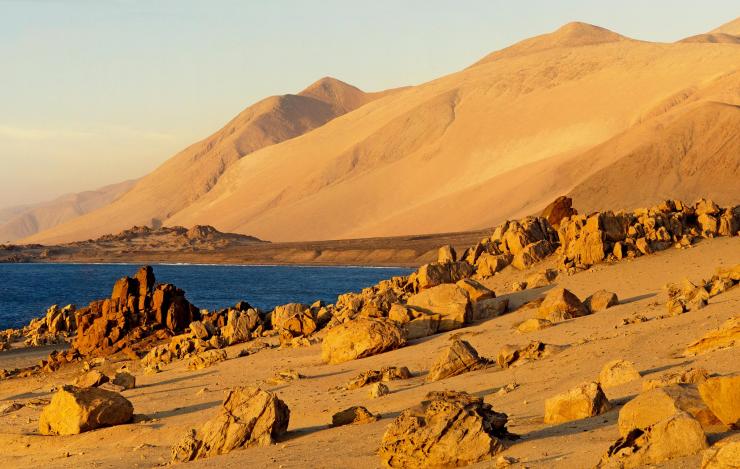(单词翻译:单击)
听力文本
In fact, most small desert creatures are nocturnal.
事实上,大多数小型沙漠动物都是夜行动物
So it's only now that you can judge just how much life there can be in a desert.
所以只有此时你才能判断沙漠中究竟有多少生物
But moisture lost, even at night, has to be replaced sometime, somehow.
可是水分在晚上也会损耗,必须在什么时候想办法补充
And that problem dominates the lives of all desert dwellers.
这一问题支配着所有沙漠动物的生活
The Atacama in Chile. This is the driest desert in the world.
智利的阿塔卡马沙漠,这里是世界上最干旱的沙漠。
Some parts may not see rain for 50 years, and with such a record,
有的地方可能连续5年不会下一滴雨,既然有了这一纪录,
you would expect the place to be completely barren.
不难想象这个地方定是彻底的荒芜。

These are South America's camels, guanacos.
这些是南美洲的骆驼——原驼
They are very good at conserving moisture, but they, nonetheless, need a regular supply of water.
它们非常善于保存水分,但它们仍须定期补充水。
They get it partly from cactus flowers.
其中一部分水取自仙人掌花
But that explanation raises another question.
但这里又牵扯出另一个问题
How do the cacti survive without rain?
仙人掌为何能在这个无雨地带生存
Hot winds suck all the moisture from the surface of the land.
热浪抽干了地面上所有的水分
Clearly, there must be something else that takes the place of rain.
显然,这里必须有其它东西能代替雨水的作用
The secret is a cold sea current that runs parallel to the land.
答案就是一股与陆地平行的寒冷洋流
The cold water cools the moist, warm air above it and that produces banks of fog.
冷水使得上方的暖湿气流冷却形成一团团的雾霾。
视频及简介
陆地的表面大约30%部分是沙漠,这些地区虽然严重缺水,生态系统却异常的多样。揭开沙漠地区的生存秘密,体验这种动态系统中短暂的自然本性。


